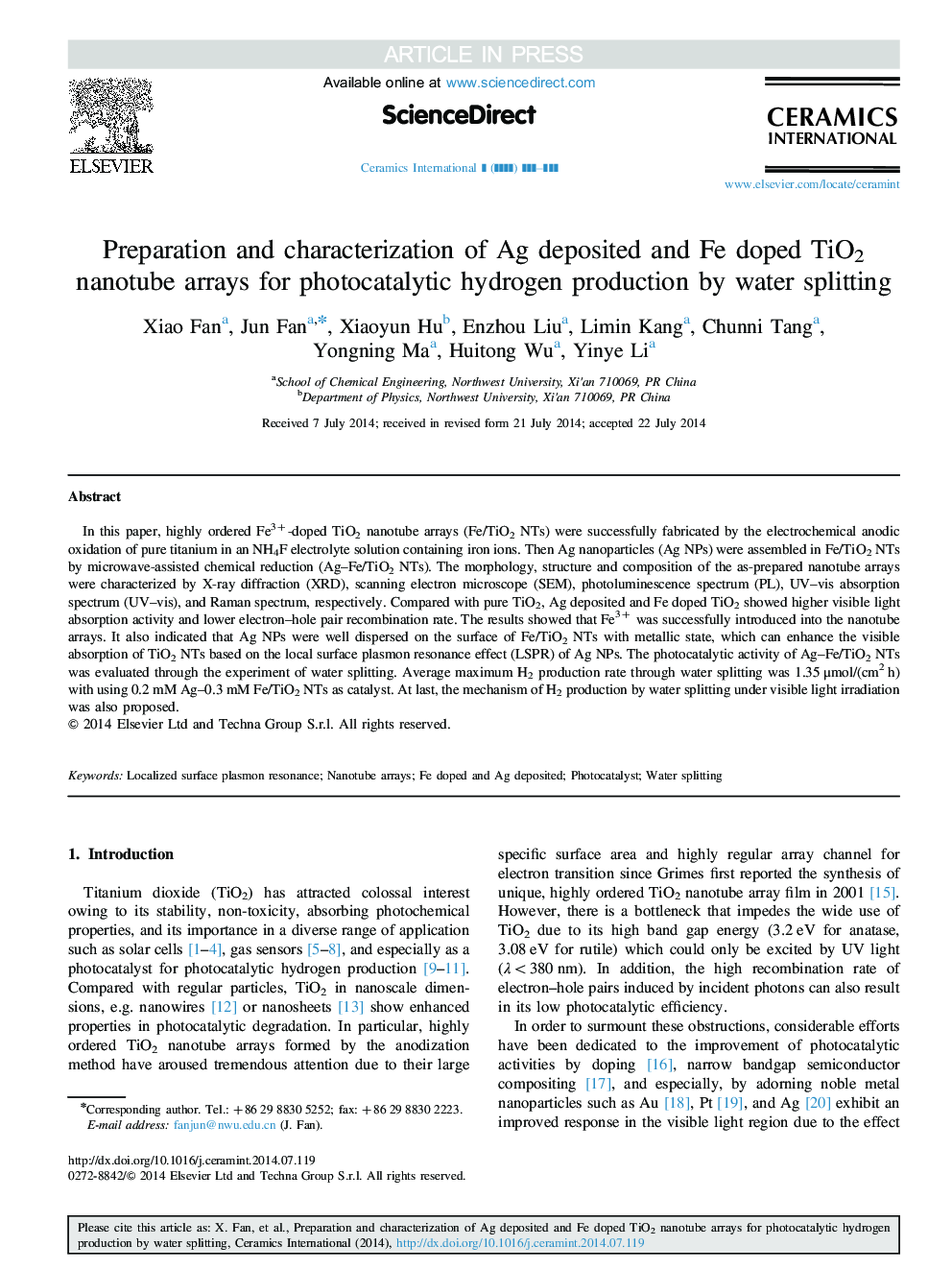| Article ID | Journal | Published Year | Pages | File Type |
|---|---|---|---|---|
| 10624908 | Ceramics International | 2014 | 11 Pages |
Abstract
In this paper, highly ordered Fe3+-doped TiO2 nanotube arrays (Fe/TiO2 NTs) were successfully fabricated by the electrochemical anodic oxidation of pure titanium in an NH4F electrolyte solution containing iron ions. Then Ag nanoparticles (Ag NPs) were assembled in Fe/TiO2 NTs by microwave-assisted chemical reduction (Ag-Fe/TiO2 NTs). The morphology, structure and composition of the as-prepared nanotube arrays were characterized by X-ray diffraction (XRD), scanning electron microscope (SEM), photoluminescence spectrum (PL), UV-vis absorption spectrum (UV-vis), and Raman spectrum, respectively. Compared with pure TiO2, Ag deposited and Fe doped TiO2 showed higher visible light absorption activity and lower electron-hole pair recombination rate. The results showed that Fe3+ was successfully introduced into the nanotube arrays. It also indicated that Ag NPs were well dispersed on the surface of Fe/TiO2 NTs with metallic state, which can enhance the visible absorption of TiO2 NTs based on the local surface plasmon resonance effect (LSPR) of Ag NPs. The photocatalytic activity of Ag-Fe/TiO2 NTs was evaluated through the experiment of water splitting. Average maximum H2 production rate through water splitting was 1.35 μmol/(cm2 h) with using 0.2 mM Ag-0.3 mM Fe/TiO2 NTs as catalyst. At last, the mechanism of H2 production by water splitting under visible light irradiation was also proposed.
Related Topics
Physical Sciences and Engineering
Materials Science
Ceramics and Composites
Authors
Xiao Fan, Jun Fan, Xiaoyun Hu, Enzhou Liu, Limin Kang, Chunni Tang, Yongning Ma, Huitong Wu, Yinye Li,
